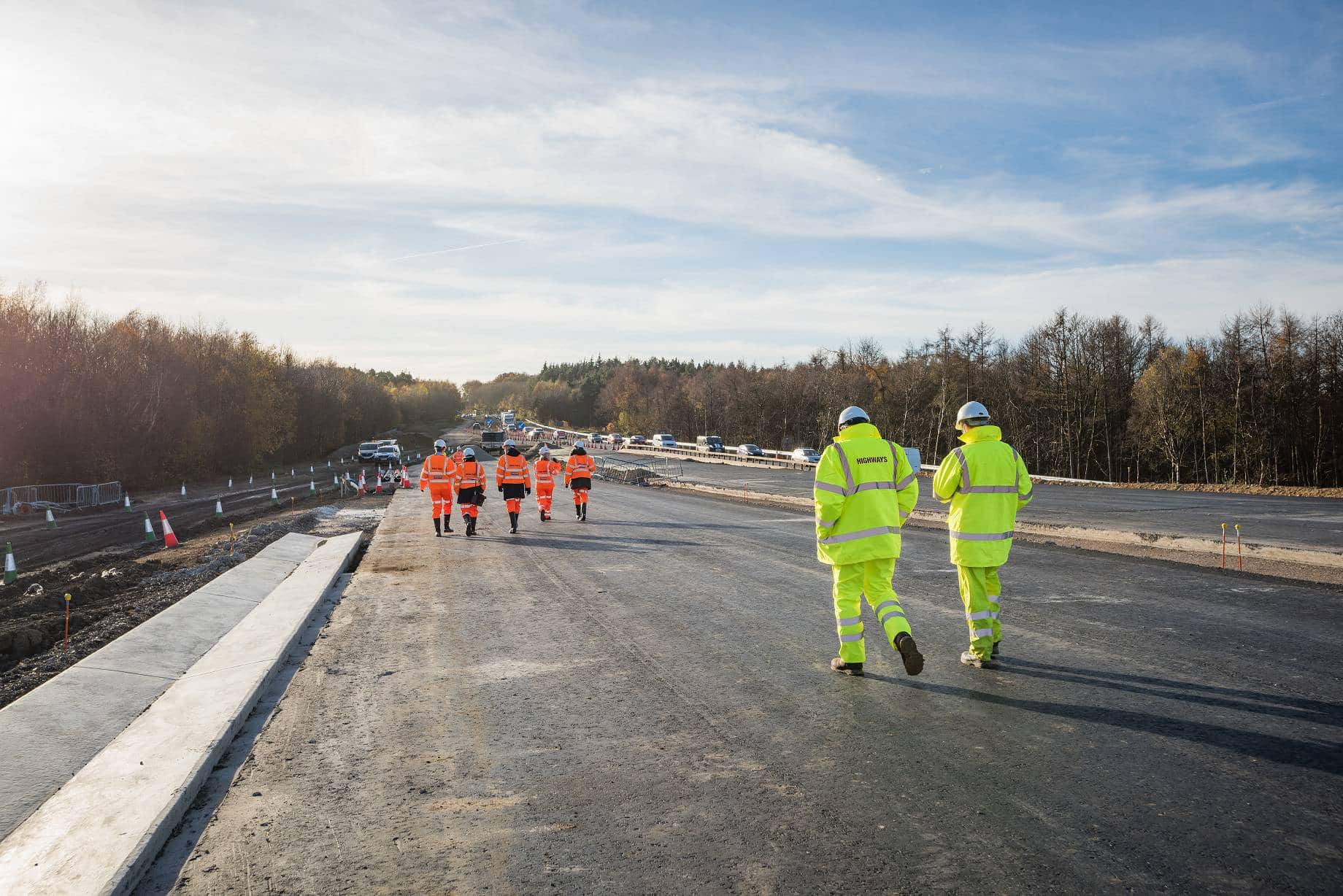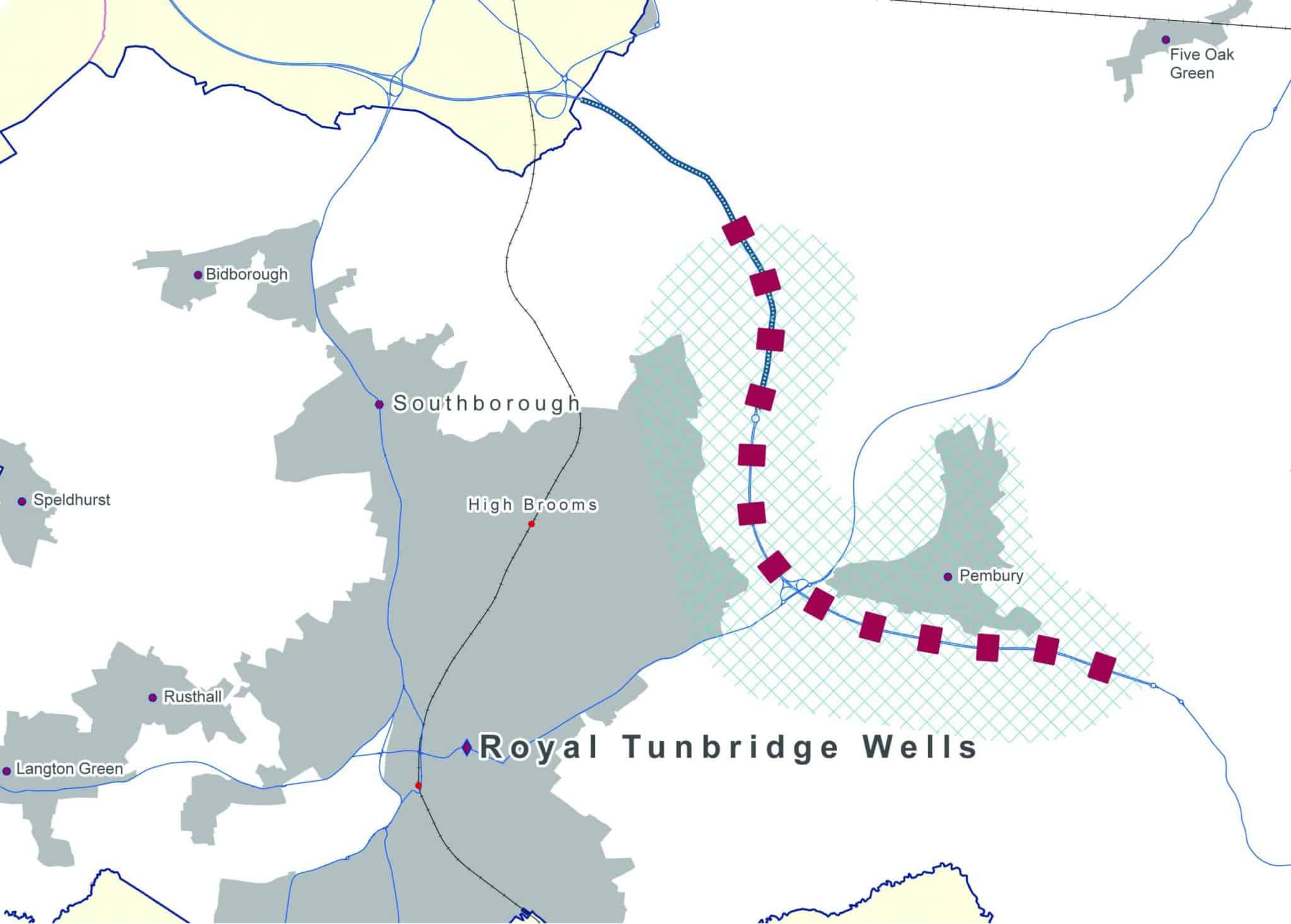RESIDENTS OF Tunbridge Wells and the surrounding villages will have a chance to shape the future of the borough next month when a consultation is launched on where to build 13,000 houses within the next 15 years.
Five options are on the table ranging from concentrating development into a few key areas, notably in Tunbridge Wells itself, to developing a brand new ‘garden village’ within the weald.
Nothing has yet been set in stone, but one thing members of the council are certain of is that the option to do nothing is not on the table. Failure to meet central government expectations could lead to planning decisions being taken away from the borough council and handed to technocrats elsewhere.
Pressure has been mounting on councils across the country to formulate up to date ‘local plans’ that comprehensively spell out how local authorities will meet their development commitments over the next decade and a half.
“It is intended to show is a direction of travel”
‘Evidence gathering’ by council officers has been ongoing for the past 18 months, including a ‘call for sites’ which have allowed residents and developers to identify areas of land they feel are suitable to be built on.
“We have gone out and conducted various studies and gathered information in order to have the most up to date statistics on the borough.
“The evidence falls into distinct groups. On the one hand is a set of studies which tells you how much development you have to accommodate. On the other side you have to balance this with studies to do with the landscape, the greenbelt or flooding ect,” explained Kelvin Hinton, the council’s Planning Policy Manager.
The result is a recently published document titled ‘Issues and Options’. And while Mr Hilton recognises options on how to meet the growing demand for housing will grab the most attention, he stresses aspects such as the local economy and jobs market are also considered.
“What I am keen to stress to the public is that while this Issues and Options document is produced as part of the local plan process it is not itself a plan. It is completely open to people for comment and will pose as many questions as it answers, but what it is intended to show is a direction of travel.”
The context:
The council states it will need to accommodate 13,000 houses within the borough by 2033. Alongside the provision of housing there will need to be the creation of accompanying job opportunities, meaning development is not going to be residential in nature.
Housing is becoming increasing unaffordable, with the an average house price in Tunbridge Wells borough of £351,000 in 2015. This has led to entry level house prices 11 times earnings of households, compared to 6.5 nationally. Rents have also increased ‘above inflation’ since 2008.
Economically, it is recognised that while the town remains an attractive place to do business, a key issue is the lack of available land and premises, following the ‘significant loss’ of office floorspace in recent years – a trend set to continue. Improvements to transport and infrastructure are also required.
However, the document notes there is ‘likely to be no single way or option to deliver the development needed in Tunbridge Wells borough’.
While a number of locations throughout the borough could potentially accommodate ‘some, or all, of the development required’ in terms of physical space, many face constraints.
These factors include highway capacity and congestion and landscape sensitivity – with 70per cent of the 126 square miles that make up the borough designated as High Weald Area of Outstanding Natural Beauty. Flooding and the nature of the existing built environment are also considerations.
The suggested categorisation of settlements in the borough:
| Grouping | Settlement |
| Main Urban Area | Royal Tunbridge Wells and Southborough |
| Group A | Cranbrook, Paddock Wood, Hawkhurst (Highgate and The Moor), Rusthall, Pembury |
| Group B | Goudhurst, Brenchley, Lamberhurst, Five Oak
Green |
| Group C | Speldhurst, Sandhurst, Benenden, Langton
Green, Horsmonden, Sissinghurst |
| Group D | Frittenden, Bidborough, Matfield |
| Group E | Iden Green, Kilndown |
What are the options?
The council has listed five broad options to consider, each of which have merits and pitfalls. Council officials also believe it is likely different aspects of the various options may end up being applied.
“We have to foresee the strategy going forward. But we recognise that the nature of Tunbridge Wells means there won’t necessarily be one one option as the silver bullet. It could be a combination of these,” Mr Hilton explained.
Option 1: Focused Growth
Effectively the status quo choice as it is based on the council’s existing strategy of concentrating the majority of development the town and Southborough. A smaller proportion is focused on the other three main settlements of Paddock Wood, Cranbrook and Hawkhurst and development is limited within the villages and rural areas.
Pros:
- Focuses development on current most sustainable locations with access to services
- Access to public transport facilities and opportunity to enhance provision
- Limited rural housing development and reduces impact over development on a large part of the borough.
Cons:
- Increases already high levels of congestion
- The number of brownfield sites available is running out and so greenbelt development may be unavoidable.
- Could result in ‘settlement coalescence’ – the merging of Tunbridge Wells into neighbouring villages.
Option 2: Semi-dispersed Growth
In effect it is option one but with a slightly larger percentage of development directed to some of the larger villages in groups A – B. Smaller villages will still be spared from most of the development.
Pros:
- Limited development at the smaller villages and rural areas
- Opportunity to contribute to the viability of the rural economy
- Potential to increase provision of affordable housing in rural areas
Cons:
- Some villages are not well served by public transport with resulting increased reliance on car use
- Continues to place pressure on the historic environment and character of Royal Tunbridge Wells
- Does not provide for the full potential of rural housing development
Â
Option 3: Dispersed Growth
Development distribution proportional across all of the borough’s settlements. The amount of new development will be proportional to reflect the size of each settlement and existing facilities.
Pros:
- Possible opportunities for higher densities in larger town/village centre locations, especially where there is good access to public transport, services and jobs.
- Potential to enhance the sustainability of rural settlements by housing development supporting local services/facilities and enhanced public transport
- Seeks to provide for the full potential of rural housing development
Cons:
- Could necessitate some development within areas designated as Areas of Outstanding Natural Beauty, Green Belt or areas prone to flood risk.
- The scale of development in some villages may not be sufficient to ensure services are viable
- Some villages are relatively remote from a comprehensive range of facilities and services

 Option 4: Growth Corridor-led Approach
Development distribution focused around the A21, close to Royal Tunbridge Wells and Pembury, as a new ‘growth corridor’ in light of the soon to be completed dualling programme.
Pros:
- Limits allocated development at other parts of the town and in Southborough, as well as in other larger villages of Paddock Wood, Cranbrook, Hawkhurst and broader rural area
- Locates growth close to established employment locations and services, helping to minimise need to travel
- Supports existing upgrades to infrastructure with potential to secure additional infrastructure improvements
Cons:
- Directs significant development to the northern part of the borough around Royal Tunbridge Wells and Pembury
- Does not provide for the full potential of rural housing development
- Could necessitate some development within areas designated as Areas of Outstanding Natural Beauty and Green Belt.
Â
Option 5: New Settlement
New freestanding ‘Garden Village’ settlement. There is no location identified with this option. A new settlement could be located anywhere within the borough.
This option is based on a potential settlement of between 5,000 and 7,000 homes plus other business, community and leisure uses. The Council would expect any development of a new settlement to be planned and delivered on the basis of established and accepted ‘Garden City’ principles.
Pros:
- The potential to plan holistically and enable comprehensive masterplanning, including provision of transport infrastructure, community facilities and green infrastructure
- May allow for greater delivery of affordable housing
- Greater scope for opportunities for mixed use development and range of employments
Cons:
- Large greenfield land take likely to be required
- The infrastructure requirements will be considerable and may have implications for timely delivery.
- Consideration of development in other parts of the borough is likely still to be necessary to meet identified development needs in the short/medium term
 What happens next?
A consultation on the options will be launched on May 2 and run until June 12. Feedback will be fed into a draft of the council’s new Local Plan which will be submitted to the government for examination in 2018. If it passes inspection from the government and examination from an independent planning inspector the council will formally adopt the Local Plan in 2019 and will aim to ensure development starts later that year.
“We want to positively plan for our borough’s future, providing for needed development and associated infrastructure while retaining the quality of our local environment.
“Reconciling differing opinions, particularly about where housing and other development should take place, will not be easy; however, we are keen to hear everyone’s views on the issues and options explained in this document and would like to thank you for taking an interest in the future of the borough,” Cllr Alan McDermott, Deputy Leader and Portfolio Holder for Planning and Transportation.








